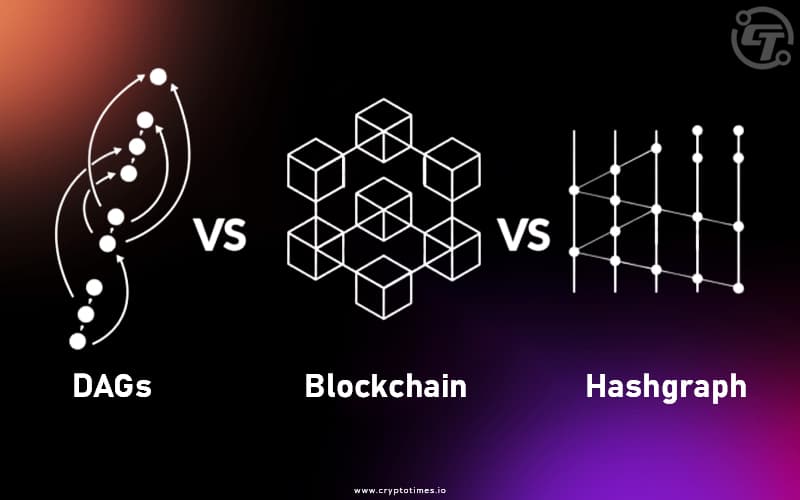Distributed Ledger Technologies (DLTs) are pioneering the digital era, presenting novel ways to handle data and perform transactions in a more decentralized landscape. These systems transform how we store, retrieve, and authenticate information, providing more precise, safer, and more accessible solutions from a central authority.
Of the various DLTs in the market, three technologies notably rise above the rest: Blockchain, Hashgraph, and DAG (Directed Acyclic Graph). While all are categorized under DLTs, each has distinct features that set it apart.
This article outlines the key differences between blockchain, hashgraph, and DAG.
Basic Overviews
Here are some short overviews about Blockchain, Hashgraph, and DAG, which you should definitely check.
Blockchain Technology
Blockchain is a digital ledger made up of linked data blocks. Each block contains a group of transactions and has a unique cryptographic hash from the previous block, creating the “chain” in the blockchain.
Unlike centralized systems, blockchain operates without a central authority. Instead, various participants share control and validation responsibilities.
In order to validate and include a transaction or change, network consensus is necessary. Different consensus methods exist, with Proof of Work (PoW) and Proof of Stake (PoS) being the most common. These methods safeguard transactions and deter malicious activities.
Hashgraph Mechanism
Hashgraph, although sometimes likened to blockchain, introduces a different system and structure. It employs a graph-oriented approach, where information disperses across the network via a method known as the “gossip protocol.”
This protocol is all about events. When an event occurs, it’s linked to its immediate predecessor, successively weaving the intricate web or structure that is the Hashgraph.
Rather than leveraging PoW or PoS, Hashgraph incorporates the Byzantine Fault Tolerance for consensus. This mechanism boasts efficiency, potentially outclassing the likes of PoW regarding speed and energy consumption.
Directed Acyclic Graph (DAG)
Directed Acyclic Graph, commonly abbreviated as DAG, introduces another variation to distributed ledger technologies. Unlike its counterparts, DAG omits the use of blocks and miners entirely. Instead, it operates on a system where each transaction acts as its validator.
In DAG, whenever a new transaction enters the network, it is directly responsible for verifying the legitimacy of two preceding transactions.
This creates a vast, interconnected mesh of transactions, ensuring security and verification. With the absence of blocks and miners, DAGs are touted for their potential speed and scalability, offering a promising alternative to traditional blockchain models.
Table of Comparison
| Parameters | Blockchain | Hashgraph | DAG |
| Structure | Linear Chain | Events | Web-like |
| Consensus | PoW, PoS | Gossip | Direct References |
| Speed | Slower | Fast | Varies |
| Open Sources | Mostly | Limited | Varies |
| Scalability | High | Limited | High |
| Energy Efficiency | Varies | Lower | Higher |
Conclusion:
Choosing the “best” DLT depends on the application related to DeFi and specific requirements. Blockchain’s security and maturity make it a reliable choice for many applications, but its scalability issues can be a drawback. Hashgraph provides efficiency and speed but is less decentralized in its ownership.
DAGs promise scalability and zero fees, but they’re relatively new and might face security and broad adoption challenges. In the ever-evolving landscape of technology, hybrid solutions or recent advancements might emerge, combining the strengths of these DLTs. For now, it’s crucial to assess individual needs and choose the technology that aligns best with the projects.






